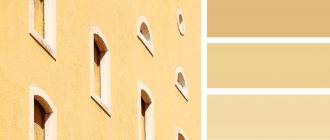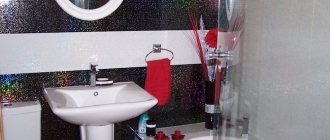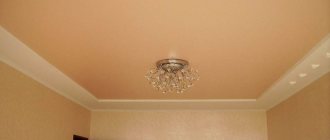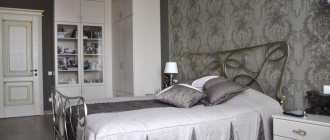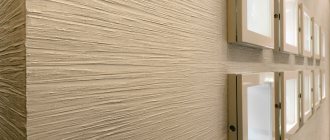Every owner of an apartment or private house is pleased when guests evaluate the interior of their home with slight envy. The living room is the main room in the entire house, since this is where the family spends their leisure time, discusses the events of the day and celebrates holidays.
Sooner or later, the room needs to carry out repair work or simply replace the furniture, and then the owners are faced with the question: “How to choose a living room so that it meets the requirements and tastes of all family members?”
The main criteria when choosing a living room should be:
- The functionality of each interior item.
- Harmony of the furniture with the design of the walls, floor and ceiling.
- Acceptable price.
- Taste requirements of the inhabitants of the house.
If you do not comply with at least one of these points, it can become uncomfortable, with a painful, oppressive atmosphere, despite the expensive furniture.
How to choose the right living room
Before you start purchasing the contents of the room (furniture), it is important to carefully plan the entire interior in the smallest detail. This process takes a lot of time and effort, especially for non-professionals, so to get rid of the hassle, it is better to contact a design company.
The first stage of planning will be to determine the functionality of the room. To do this, you need to draw on paper a detailed plan of the room, taking into account all window and door openings, niches, bay windows and similar elements. Then determine the purpose of the living room: will it be just a relaxation area, a study or a room for holding parties.
The filling of the room directly depends on this point, for example, for an office you will need a computer desk or a multifunctional bureau, a comfortable chair and several shelves for books and documents. Zoning of space is also quite popular in the design of the living room.
Most often, this technique is carried out by contrasting painting the walls in colors that are radically different from each other, or by light separation. It is worth noting that this technique is often used in the design of small spaces.
Beautiful examples in the interior
If you have chosen white or beige as the main, dominant color, then an excellent solution would be to combine it with blue, red, black, yellow, and pink tones.
The basic elegant black tone looks beautiful with white, green, and yellow.
Neutral gray combines well with yellow, green, white, beige and brown.
Traditional brown is combined with pink, white, green, yellow and beige.
The combination of aggressive bright red looks great with black, white, gray and yellow.
Cheerful orange combines well with chocolate, milk, and pistachio.
Noble yellow creates comfort with lilac, white, black, gray, brown.
Calming green goes well with purple, white, gray, black, yellow, and orange.
Light blue is combined with white, yellow, green.
Calming blue looks great with white, yellow, green, and beige.
The dominant purple is combined with beige, green, and gray.
To learn how to choose a color palette for the walls in the living room, watch the following video.
- home
- Home ideas
Painting walls in the interior makes the room not only attractive, but also creative with the help of a wide range of decorative techniques. Wall design ideas are not limited to plain painting; structural paint and other original decor options will create a beautiful interior.
How to choose a living room color
The color scheme of this room should be made in shades that promote relaxation, both emotional and physical. Psychologists recommend several primary colors:
- Mint.
- Wheat.
- Light blue.
- Lilac.
- Green.
Despite the popularity of painting walls, many people prefer to wallpaper their walls the old fashioned way.
However, among the variety of this material, it is easy to get confused and not everyone knows how to choose wallpaper for the living room. To make the right choice, several criteria must be taken into account:
- Properties of this or that type of wallpaper.
- Naturalness of the material.
- Price.
- Color (plain or printed).
In recent years, cork or bamboo wallpapers have become especially popular, as they have excellent sound and heat insulation properties and also look great in the interior.
Shade combinations
To correctly combine shades, you need to know what goes with what:
- White color can visually enlarge a room. It can be combined with any bright color and its shade. The most beautiful combinations are: red-beige-white, blue-sand-white, white-ivory-pink or khaki. White walls look beautiful with dark floors.
- Black color looks expensive and can highlight any other tone. The most successful combinations: cream-black-burgundy, red-black-white, pink-black-gray.
- Brown is the color of tradition. It goes well with beige and green, as well as yellow and soft blue.
- Gray is recommended to be combined with very bright positive colors. Red-white-gray, green-yellow-gray, blue-gray-beige.
- It is recommended to combine red color with calmer shades. Looks great when decorating a living room. Pairs well with white and orange, as well as blue and gray colors.
- Orange or peach visually narrows the room. Pairs perfectly with pink and chocolate, pistachio and gray tones.
- Yellow visually expands the space. Looks great in combination with white, turquoise, burgundy, sand shades.
- Green looks good with blue, white, gray, lavender shades.
- Blue can reduce appetite and combine with red, brown, and beige tones.
- Blue color looks great with bright shades: yellow, red, pink. It also goes well with cream and gray.
- Purple visually narrows the space. Combines with pistachio, sand, white, orange, black and beige colors.
- Pink goes well with neutral shades: blue, beige, white, burgundy, purple and mint.
Design options
Plain walls are chosen for discreet interiors; such walls serve as a neutral canvas for expressing style in pieces of furniture and accessories.
Painting in two different colors
Painting walls in two different colors serves as a rational technique to visually enlarge a room, change the perception of the geometry of asymmetrical walls, or simply focus on one wall. One wall can be painted with two different colors.
Painting in different colors (more than two)
Painting with several colors in the same range or a combination of contrasting colors will become an independent decoration in the interior. This could be stripes, vertical or horizontal separation of walls, or painting all 4 walls in different colors. Within one room, it is better to make one color the main one, and leave the remaining 2-3 colors as auxiliary ones.
In the photo, one of the walls is painted in three colors with uneven stripes using a geometric technique using masking tape.
Stencils
You can make your own designs using stencils and templates by cutting them out of paper and attaching them to the wall. You can also draw boundaries for the design using masking tape glued to the dried base color.
Striped design
Stripes of paint stretch or expand walls and change the perception of a room depending on the location, color and frequency of the stripes.
Patterns and ornaments
Suitable for a child’s room, you can draw a house, a fence, trees, ethno ornaments, monograms on the walls of the child’s bedroom interior.
Divorces
They can be organized or chaotic, created with a brush on wet walls.
Cracks or craquelure effect
They are created using acrylic painting and craquelure varnish; the more varnish, the deeper the cracks. When applying, the roller must be held vertically so that the cracks are uniform.
In the photo, the accent wall of the bedroom is made using the technique of cracked paint with a backing that matches the tone of the walls.
Under the brick
An imitation of brick can be made using plaster on a lined wall and traced seams along the wet material. After the plaster has dried, apply 2 layers of paint.
Painting with squares
Can be done using templates or masking tape. Squares can be plain or colored, of different sizes and positions on the wall.
Texture design
It is created by painting walls with textured paint, which contains acrylic particles and starch. It comes in dry and liquid states, and can also be tinted. Apply with a regular or textured roller. For interior design, special textured paint for interior work is suitable.
Gradient and ombre
Suitable for visually enlarging the ceiling if the dark color near the floor fades into white. A gradient or smooth transition of color can be horizontal or vertical, with a transition to the adjacent wall. It is created with 2 or more colors, where at the junction of the colors, using a dry roller or brush, the dark color is stretched onto the light area in one direction.
The photo shows a partition wall painted using the ombre technique with a smooth, smoky transition of gray to white closer to the ceiling.
Using a textured roller or sponge
Effects using a textured roller or sponge are made on a uniformly painted wall, creating the effect of watercolor, bark beetle, waves, cracks, velor or mosaic.
painting
Artistic painting using ethnic techniques, depicting a view of nature, animals and reproductions will become an individual feature of the interior with wall painting.
Design with moldings or panels
Creates the effect of niches or furniture facades, adding volume. Molding can be colored or white, made of wood, duropolymer, or gypsum.
Design styles
Modern
The style uses single or two-tone wall painting, combining white with another color. The children's interior uses bright details in stripes and patterns on the wall. The emphasis is on practicality, so an unobtrusive palette and combinations are used.
Minimalism
Minimalism is observed in monochromatic painting, a combination of gray or pale blue with white, and decor with wide stripes. Sometimes contrasting molding or textured paint is used in the interior.
Loft
The interior is not limited to a specific color palette; the design is often used only on an accent wall. Brickwork can also be painted using ombre technology.
Classic
In the interior it is expressed in a neutral light background with golden, white monograms, in blue or black patterns, which are emphasized by tassels and fringe on velvet curtains of emerald or ruby color.
Provence
Provence or the French summer gloss of the interior is recognizable in pink, mint or blue walls, olive shade of curtains and textiles. The walls in the interior can be painted plain or striped. To create individuality, you can make an artistic painting on the wall in the form of an open window onto the summer Provencal fields.
The photo shows a turquoise bedroom in Provence style with monochromatic walls, classic furniture and floral textiles.
Country
The interior uses a combination of natural timber or stone with brown, mustard, white paint with a whitewash texture.
Scandinavian
The interior is as practical and light as possible, so the walls are creamy, white, or less often sandy or blue. Stripes, molding, 3D panels, and a white brick wall are suitable for decoration.
Painting walls as one of the types of finishing is used not only for external but also internal work thanks to paints that are odorless, dry quickly and do not harm health.

